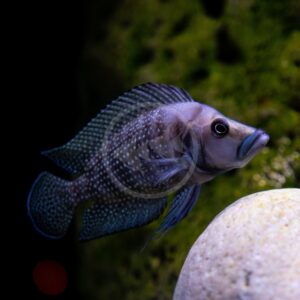CICHLID – CALVUS INK FIN
Altolamprologus calvus
$26.99 – $34.99
Calvus are endemic to rocky rubble areas of Lake Tanganyika in Africa, but there are a number of type-localities common in the aquarium trade that possess differences in appearance and patterning. This listing is for an Ink Fin Calvus, which are similar to the Black Zambian Calvus but overall are much darker black in color, particularly the dorsal fin, with many tiny white dots. Calvus, similar to Compressiceps, are recognized for their very unique laterally compressed body shape among other cichlid fishes. To tell a Calvus from a Compressiceps, note that the slope of the forehead is flat in Calvus while Compressiceps have an indentation. A more difficult way to distinguish the two is that the forehead of Calvus are also scaleless, which is what ‘calvus’ translates to in Latin: bald! Calvus are best kept as a male-female pair, though most specimens are sold at a young age where distinguishing sex is near impossible. Adult males will have more elongated fins than adult females. An adult Calvus will grow to approximately 5″, with females averaging slightly smaller than males. This is an extremely slow growing species.
Care Level: Moderate
Temperament: Semi-Aggressive
Live Plant Safe: With Caution
General Description: Calvus are endemic to rocky rubble areas of Lake Tanganyika in Africa, but there are a number of type-localities common in the aquarium trade that possess differences in appearance and patterning. This listing is for an Ink Fin Calvus, which are similar to the Black Zambian Calvus but overall are much darker black in color, particularly the dorsal fin, with many tiny white dots. Calvus, similar to Compressiceps, are recognized for their very unique laterally compressed body shape among other cichlid fishes. To tell a Calvus from a Compressiceps, note that the slope of the forehead is flat in Calvus while Compressiceps have an indentation. A more difficult way to distinguish the two is that the forehead of Calvus are also scaleless, which is what ‘calvus’ translates to in Latin: bald! Calvus are best kept as a male-female pair, though most specimens are sold at a young age where distinguishing sex is near impossible. Adult males will have more elongated fins than adult females. An adult Calvus will grow to approximately 5″, with females averaging slightly smaller than males. This is an extremely slow growing species.
Diet Requirements: Calvus are a specialized predator. Their mouthparts elongate in order to fit between rock crevices and cracks to extract small invertebrate and fish prey. A diet made up of various high quality protein based foods are ideal. Such options include frozen brine shrimp, blood worms, and chopped prawns. Tubifex worms and earthworms are also a favorite. Calvus may accept sinking pellet foods and flake foods as a staple, but these should not make up the majority of their diet. Variety is the spice of life in order to maintain color, immune function and longevity of your fish. We discourage feeding any live fish because they are often of little nutritional value and increase the risk of introducing disease.
Care Requirements: An established minimum 30 gallon aquarium is ideal for a Calvus. This cichlid cannot be put into a biologically immature aquarium. Weekly water changes are encouraged to keep water parameters pristine (Nitrates < 15 ppm) as Calvus do not like high nitrates and deteriorating water parameters. The aquarium should have a finer substrate, driftwood and rocks for this cichlid to feel at home. Stacked rocks to create many hiding spaces and caves can encourage more outgoing behavior. African cichlid specific substrates, or even marine Aragonite substrate, are great choices because they will buffer the pH and alkalinity to levels characteristic of Lake Tanganyika that is needed for this species to thrive and spawn, if desired. Common tank mates for Calvus include Altolamprologus, Julidochromis, Neolamprologus, and other dwarf African cichlids from Malawi [note potential different water chemistry preferences, however; namely pH]. Calvus are not particularly territorial or aggressive, making them somewhat diverse in compatability for a cichlid. Avoid small fish that could be eaten. Recommended water conditions, 72-82° F, KH 10-20, pH 7.5-9.0.
Purchase Size: Small: 3/4” to 1”
Note: Your item may not look identical to the image provided due to variation within species. Purchase sizes are approximate.
Dry goods orders are shipped via US Postal Service or UPS to the address provided at checkout based on the selection made in your website shopping cart. Product is carefully packed to help prevent any damage during shipping. Once processed you will receive a shipment notification via email with tracking number, and delivery notification. Please allow 48 hours for processing after your order is placed.
Perishable items (i.e. live plants, refrigerated/frozen foods) are shipped via US Postal Service 2-3 day to the address provided at checkout for a $25.00 flat rate charge. Items are packed with secure packing material and heat, cold, or Cryo packs as needed to maintain safe temperatures during transit. If one or more perishable items are in the shopping cart at checkout the $25.00 perishable shipping charge will automatically appear and need to be selected. Once processed you will receive a shipment notification via email with tracking number. Please allow 48 hours for processing after your order is placed.
Livestock (i.e. fish, invertebrates, coral) are shipped via UPS Overnight to the address provided at checkout for a $55.00 flat rate charge. Livestock is packed in insulated styrofoam boxes with secure packing material and heat, cold, or Cryo packs as needed to maintain safe temperatures during transit. If one or more livestock items are in the shopping cart at checkout the $55.00 livestock shipping charge will automatically appear and need to be selected. Livestock is shipped Monday through Wednesday ONLY (no weekend delivery is available) weather permitting, and we reserve the right to delay shipping until conditions are appropriate for safe arrival. Once your order is placed we will contact you to arrange the best shipping date based on these criteria. Someone must be available to receive the livestock order on the first delivery attempt. Once processed you will receive a shipment notification via email with tracking number. Please allow 48 hours for processing after your order is placed.
For mixed dry goods/perishable & livestock orders items will be shipped via their corresponding shipping methods outlined above. Dry goods will be shipped via US Postal Service or UPS based on your selection and checkout, while livestock will ship via UPS Overnight for a $55.00 flat rate charge. You will receive separate notifications and tracking numbers for the dry goods and livestock. Please note due to different carriers and shipping methods dry goods and livestock may arrive on different days.
Related products
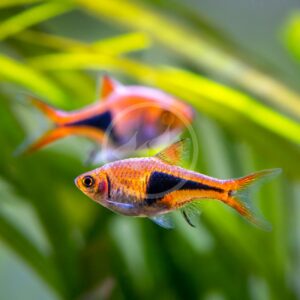
RASBORA – HET / HARLEQUIN
Trigonostigma heteromorpha
$5.99 – $8.99

CICHLID – GEOPHAGUS TAPAJOS RED HEAD
Geophagus pyrocephalus
$19.99 – $69.99

PLECOSTOMUS – BRISTLENOSE / BUSHYNOSE
Ancistrus sp.
$4.79 – $79.99
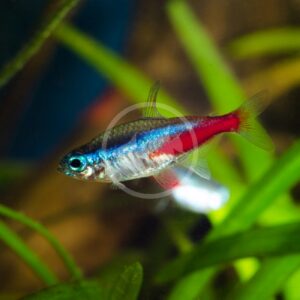
TETRA – NEON
Paracheirodon innesi
$6.99
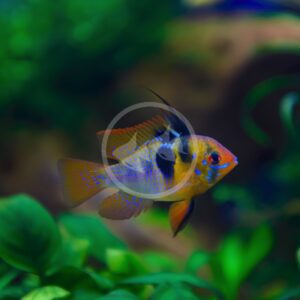
CICHLID – RAM GERMAN BLUE
Mikrogeophagus ramirezi
$12.99 – $24.99
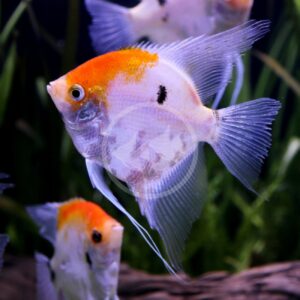
ANGELFISH – FW KOI
Pterophyllum scalare
$10.49 – $59.99
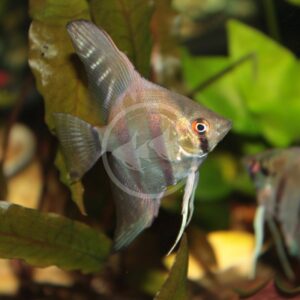
ANGELFISH – FW SILVER
Pterophyllum scalare
$9.99 – $39.99


